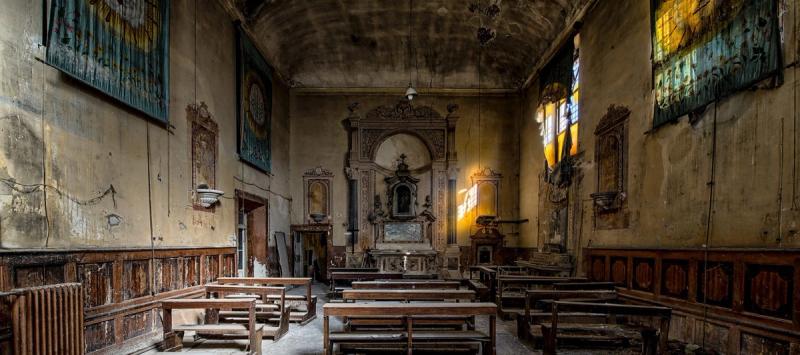The book of Revelation is generally considered one of the most difficult books to understand, not without good reason. Its complex imagery and visions can be very difficult to understand and interpret. There is far too much detail to explain in one article so here I will only point out one of the major themes that run throughout the book. That theme is that the church is under attack and Jesus is calling his church to persevere and to hope in his power and victory. Dr. Dennis Johnson in his book Triumph of the Lamb writes,
Revelation is for a church under attack. Its purpose is to awaken us to the dimensions of the battle and the strategies of the enemy, so that we will respond to the attacks with faithful perseverance and purity, overcoming by the blood of the Lamb. (Dennis E. Johnson, Triumph of the Lamb: A Commentary on Revelation, 22)
Revelation has important things to say for the perseverance and encouragement of Christians and the church throughout the ages that are vital for the churchs life in this age.
1. Revelation depicts the current battle between Satan and God's people.
Much of Revelation is a visual picture of the cosmic battle between Satan and God and his church (Rev.12:7-9). Satan depicted as a dragon wars against Gods people on earth, with the help of the beast and the harlot (Rev. 12:17; 13:7-10,12; 17:5-6). The Christian life is, for the most part, very ordinary, unglamorous, and full of suffering while everything around us in the world seems to glitter with tempting alternatives. Consumerism, materialism, power, money, sex, and many other things tug at our hearts calling us away from following the Faithful and True (Rev.19:11). Revelation helps us see that our battles are part of the greater cosmic conflict between Satan and God.
Then the dragon became furious with the woman and went off to make war on the rest of her offspring, on those who keep the commandments of God and hold to the testimony of Jesus. (Rev. 12:17)
2. Revelation shows Christs power over his enemies.
Despite the dark and painful imagery of the war on the saints, Revelation also shows us Christ's victory over evil, suffering, and death. When we consider the picture Revelation gives us of Christthe victorious Lamb surrounded by singing saints, the great Warrior mounted upon a white horse with a sword we see his victory in all its glory (Rev. 19: 11-13).
Then I saw heaven opened, and behold, a white horse! The one sitting on it is called Faithful and True, and in righteousness, he judges and makes war. His eyes are like a flame of fire, and on his head are many diadems, and he has a name written that no one knows but himself. He is clothed in a robe dipped in blood, and the name by which he is called is The Word of God. And the armies of heaven, arrayed in fine linen, white and pure, were following him on white horses. From his mouth comes a sharp sword with which to strike down the nations, and he will rule them with a rod of iron. He will tread the winepress of the fury of the wrath of God the Almighty. On his robe and on his thigh he has a name written, King of kings and Lord of lords. (Rev. 19:11-16)
In contrast to the spectacle of Christ's suffering and death on the cross, Revelation shows us Christ's victory over Satan, sin, and death. Even now Christ walks with his church, protects his church, and conquers his bride's enemies (Rev. 1:12-20; 19:1-2; 11-16).
He is the victor, Faithful and True, who has redeemed a people out of the world (Rev. 17:14). Nothing can escape God's power and wrath except those who believe and hold fast to Christ (Rev. 17:15-18). Christ's redeemed people are called blessed and inheritors of the springs of living water (Rev. 7:17; 22:1-4). The persecution and hardships the church endures are not without end, giving Christians hope in their Warrior Champion and confidence in their future glory.
He will make war on the Lamb, and the Lamb will conquer them, for he is Lord of lords and King of kings, and those with him are called and chosen and faithful. (Rev. 17:14)
3. Revelation encourages the church to persevere and endure.
Revelation calls the church to persevere and endure the battles with confidence that the wars outcome has already been determined (Rev. 2:2, 2:19; 3:10; 13:10; 14:12-13). Despite all the warfare around them that results in suffering, persecution, and martyrdom, those who belong to God have a mark on their foreheads that seals them as Gods beloved people and fellow victors with Christ (Rev. 7:3).
The various songs and hymns throughout the book remind us that we have a great hope in an almighty and faithful God who is worthy of our praise, admiration, and trust (Rev. 5:9; 14:3; 19:1-2, 6-8). Christians share in Christs victory even though they may die in this life (Rev. 12:11). Death is no longer to be feared for those united to Christ's resurrection for they will be given eternal life in heaven (Rev. 21:2-4, 6-7).
The picture of heaven given to us in the final chapters urges us to keep in mind our heavenly home. C. S. Lewis in the last book of his Narnia series describes his characters' reaction to heaven this way:
I have come home at last! This is my real country! I belong here. This is the land I have been looking for all my life. (C. S. Lewis, The Last Battle , 171)
The new heavens and new earth will be like nothing we've ever known, but we do know that it will be wonderful (Rev. 21:1-5; 22:1-4).











